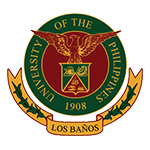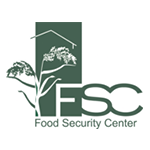A lecturer at IPB University, the state-run agricultural university based in Bogor, West Java, has suggested an idea for building regional food security amid the coronavirus restrictions, which could disrupt supply and distribution.
“Although we may not hear many public complaints [about food scarcity], we nevertheless need to [ensure adequate] food supplies during the pandemic,” Edi Santosa, an agronomy and horticulture lecturer at IPB University’s agriculture department, said in a statement on Monday.
Paradoxically, however, he noted that the restrictive policies intended to contain COVID-19 transmission had prompted a shift toward local foods.
“The phenomenon that has emerged in society is that people have consciously started diversifying food on their own during [local lockdowns],” he said.
“Organically, the people have switched from rice to other, local food [crops],” said Edi, stressing that it was important to continue campaigns that promoted local food crops and locally grown produce to maintain food security.
He suggested that the public information campaigns start at households and use an approach similar to the “dining table revolution”, locally known as revolusi meja makan.
The dining table revolution was first coined in reference to a national campaign in China that emerged soon after the outbreak in Wuhan. The campaign encouraged families to switch from communal dining habits involving shared dishes to individual portions served on separate plates.
According to Edi, Indonesia’s revolusi meja makan could be geared toward developing individual and collective memories.
Individual memory was developed through establishing new eating habits by reviving regional comfort foods that many people grew up eating. These included nasi jagung (corn grits) and papeda (sago porridge) from Maluku and Papua, as well as sago porridge a la Garut.
Collective memory referred to awareness and knowledge that the public shared and maintained. One of the many ways of developing collective memory was through public education on food security through schools and other social institutions.
“For example, the Japanese regularly hold festivals on regional foods. They are used to eating sweet potatoes or [brown] rice,” said Edi. “What the Japanese do is a good way to show how to transform local wisdom into local foods.”
Continuing, Edi said, “And when the market is stable, farmers will grow the crops that are used to make regional dishes, which will automatically keep the economy running.”
Food and dietary diversification efforts remain small in Indonesia, even though the country has a wide variety of local foods.
To compare, said Edi, the Japanese diet includes at least 21 dishes that can be served for breakfast, 20 for lunch and 34 for dinner, while the Indonesian diet has just eight dishes for breakfast, 15 for lunch and eight for dinner.
Meanwhile, the administration of Pekanbaru, the provincial capital of Riau, has implemented a three-pronged strategy for food security: the establishment of two special zones for food sovereignty and food sustainability, as well as a food barn, according to antaranews.com.
The food sovereignty zone provides assistance to farmers’ groups such as seeds and livestock, cultivation platforms, breeding cages and fertilizers. In 2020, the Pekanbaru administration provided stimulus packages to 15 farmers’ groups.
The food sustainability zone has provided stimulus packages to 12 female farmers’ groups this year, which allowed them to optimize the use of their residential yards and small tracts of private land to grow horticultural crops.
The city budget finances the food barn, which is stocked with surplus rice for distribution during special events and disasters, including the coronavirus crisis. The Pekanbaru administration allocated Rp 162 million (US$11,033) of its 2020 budget to procure 13.5 tons of rice for the food barn.
Separately, the Food Security Agency of Bengkalis regency, also in Riau, said that small local businesses manufactured sago food products, including sago rice, sago noodles and sago cakes, as well as a variety of cereals and crackers.









